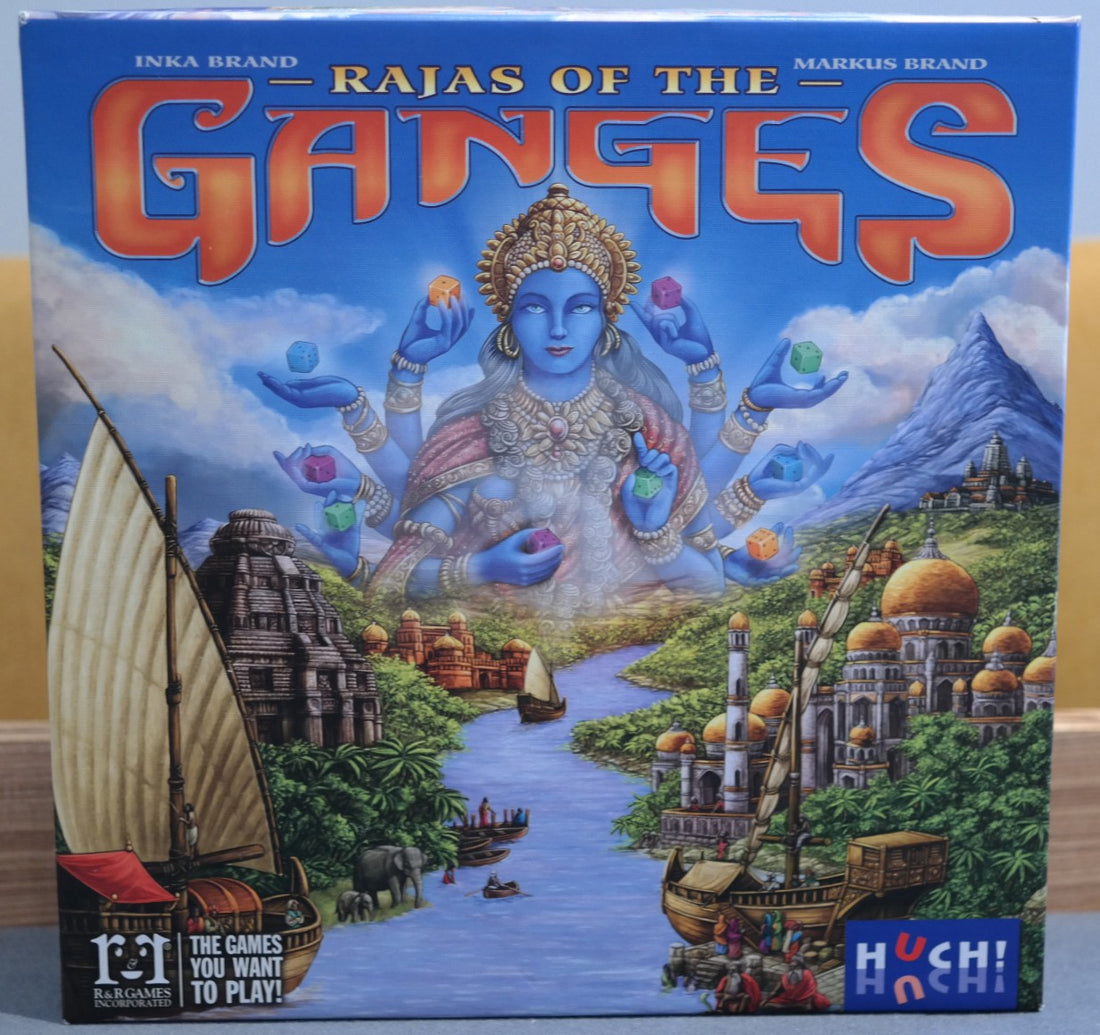As the Meeple Design website has been live for some time now we thought it was about time we added the obligatory 'favourite board games' post. It should give an idea about our thought process behind buying new board games and hopefully a bit of insight into why we started Meeple Design. This will be for my top 5 games and Hannah will write her own list for her top 5 games. I am sure the list will be different and even if there are crossovers I think the reason we like the games will vary as well.
It is difficult to pick my favourite 5 games, as there are so many that I enjoy playing and a few that I need to play more of before I can confidently say they are among my favourite games. The 5 games that I have picked are partly because they play well with 2 players and I play most often with 2 players, even pre-pandemic. It is quite clear from the 5 games that I have picked that I am a big fan of euro style games.
In order to provide a bit more detail about each game and why I like it, I will be publishing an article for each game (Check out the other articles on our blog page). They are in no particular order as it was difficult enough to narrow down to only 5 games. My top 5 games are:
Compared to my other 5 favourite Euro games, Rajas of the Ganges is not as mechanically complicated, it doesn’t have as much variability and the engine building aspect isn’t as epic. Despite this it makes it into my top 5 list, so why? Well sometimes I don’t want to play a Euro game that takes 1.5 hours or longer, I want a strategic game which I can play in 45 minutes or less. Hannah and I can get through our turns quicker in Rajas of the Ganges than almost any other game in our collection, which isn’t to say you don’t have to make decisions through the game it's just that once you choose a path to focus on then your turns become about focussing on the optimal actions and there is less that your opponent can do to disrupt your turn, at least when playing at 2 player count. All of these factors contribute to it being the most played game in our collection, highlighting just how much fun we have playing it, which I feel makes it worthy of its place in my top 5.
The scoring mechanic of Rajas of The Ganges is the most unique aspect of the game as there are 2 tracks; one for fame and one for money, Money is easier to score than fame. Each track starts at opposite ends slowly moving closer together throughout the course of the game and once they cross paths each player, other than the person who triggered the end game, has a final turn. The winner is the player who has the markers past each other by the highest amount. Compared to many other games, it gives an extremely visual representation regarding roughly how long is left of the game. As with most good Euro games your engine does ramp up in the second half so, if you aren’t paying attention to your opponents score markers, the end can still creep up on you. When this happens to me, I always feel that I have nobody to blame but myself, rather than the game end being wrapped in some obscure requirement.
So how do you score points? Rajas of The Ganges is predominantly a dice and worker placement game in which you take actions on the main board using your pool of workers and dice, held on your personal ‘Kali Statue’ board. In addition, each player has their personal province board where new lands can be added.
On the main board there are a number of worker spaces split into different sections where, to take the action, a worker, dice and/ or money has to be used. There are 4 different coloured dice and each time you gain one you roll the dice for a random value so that the colour and value rolled act as the resource for placements spots.

There are the quarry spots which allow you to take a build action adding a land tile onto your province by spending dice of a certain colour and value. The rules for placing the land are straightforward, the tile must be placed adjacent to another land tile ensuring that the roads are linked. Connecting roads to the edge of the board gives you a one time bonus; either fame, money or dice. The tiles themselves contain either structures, the primary way to earn fame when granted immediately when the tile is placed, or markets, earning you money when you take an action at the market.
At the market you can collect money for goods in your province, of which there are 3 types. Either by gaining money for each unique good that you have in your province or by scoring for the same type of goods, the number scored is determined by the value of the die face you sacrifice.
All actions at the palace require that you spend a worker to; reroll all your dice on the Kali Statue, sacrifice a specific colour dice to gain 2 of another specified colour, or spend a die of specific value to gain a misc action. The actions can be quite powerful; either ensuring you are the starting player the next round, gain you fame or money, gain karma allowing you to turn dice to the opposite side, move on the river track, improve already placed lands, or upgrade one of the 3 structures allowing you to score more points when you place that specific structure in your province.
Lastly there is the harbour which allows you to spend a die with a value of 1, 2 or 3 to move along the river track. Each step on the river track provides a bonus which if you advance far enough can be a great way to score some late game points. If you aren’t playing the variation rules then the river track is also one of 3 ways to gain an additional worker, each player can gain up to 2. The other opportunities are by passing a specific point on the fame or money track.
With the multiple different worker spots on the main board, along with the five trackers and the personal province board, it sounds complex but it all really does blend together really well so that it only takes a play through or two to get a good understanding of how the game works. For me, it's actually by adding the additional tracks and boards that move it beyond being a simple gateway worker placement game, I’m looking at you Lords of Waterdeep. I would bring this out to play with a group who hadn’t played a worker placement game before as I really think that the only difficult part to grasp is the iconography and scoring tracks but it adds so much more strategy than Lords of Waterdeep.
Most of the strategy does involve choosing which scoring tracker you want to focus on, but at the same time you still can’t completely neglect the other scoring tracker. This will determine whether you are focusing on structures or markets in your province and what stops you want on the river track. There are also additional small variations & modules, that you can introduce after you play your first few games and rules for mixed groups of new vs experienced players which allow the experienced players to start with a handicap. Like with all worker and dice placement games, it can be annoying when your opponent takes a spot that you were eyeing up or you just aren’t getting the dice rolls you want but despite this it is a strangely relaxing game. It's nice to have a game that I can pull off the shelf, set up and play without referring to the rulebook every 5 minutes, allowing me to evolve rather than revolutionise my strategy with each subsequent play.
One small point on the components; they are great. The colours of the dice stand out and are satisfying to roll. The artwork is great, with the board in particular, being very visually appealing and the tokens & tiles are good quality.

The only real negatives are that, with the exception of the scoring tracks, Rajas of The Ganges doesn’t do anything fundamentally different versus other euro & worker placement games. Maybe my enjoyment of it is enhanced by the fact it was the first worker placement focused game I played and, although there is some variability in the setup of tiles and tokens I don’t feel that this changes the flow of the game in any significant way.
If you are looking for a new worker placement game I couldn’t recommend Rajas of the Ganges highly enough. Even if you are new to worker placement I would still consider this as the rules might be more complex than other gateway worker placement games, but I think this will keep you more engaged longer term.
As fans of worker placement games we have created our own Meeple Design travel style and silhouette posters inspired by worker placement games which you can decorate your gaming space with as well as unique apparel designs to wear at your next play session of Rajas of the Ganges. All of which are available exclusively from Meeple Design - check them out here.
**Our blog is supported by fans of Meeple Design. If you buy through a link, we may earn an affiliate commission.*




